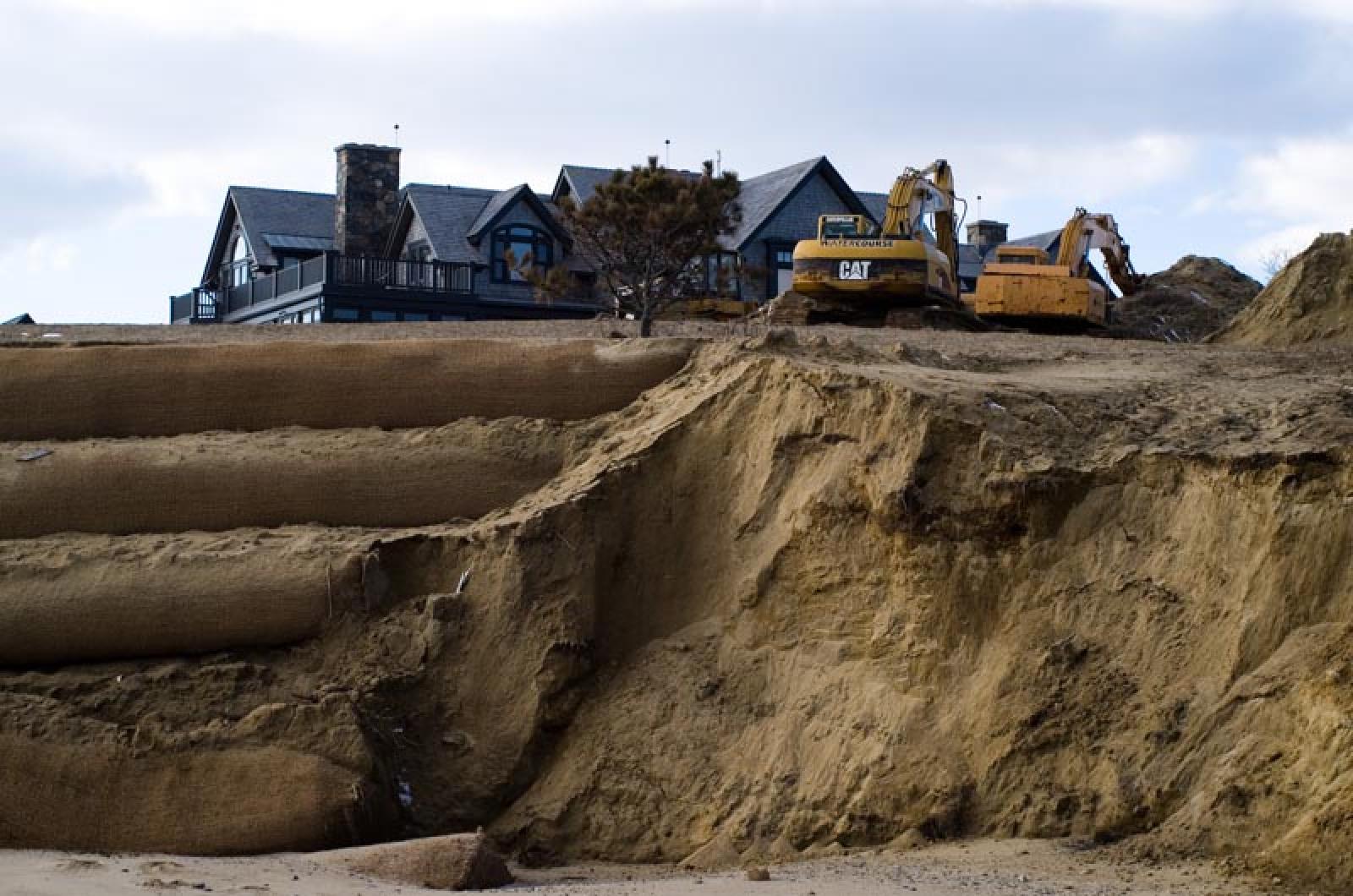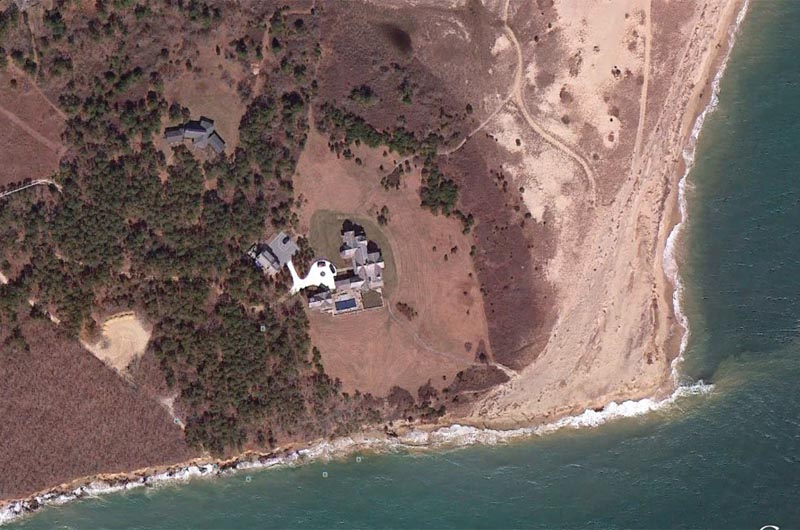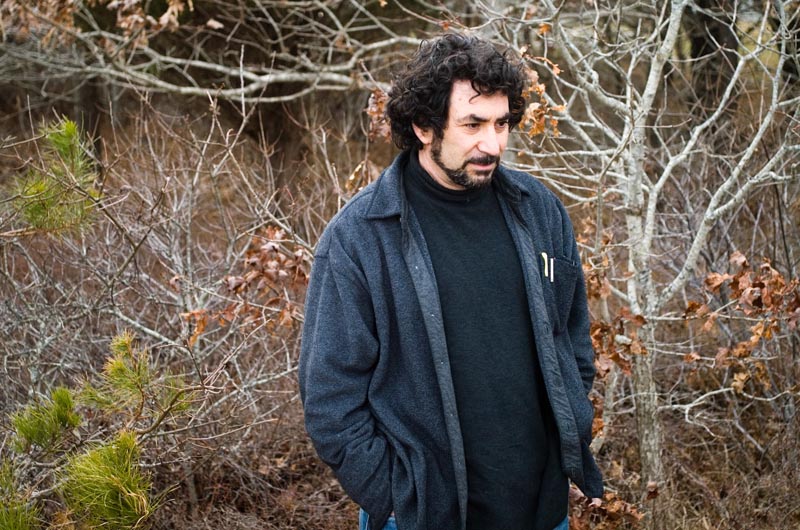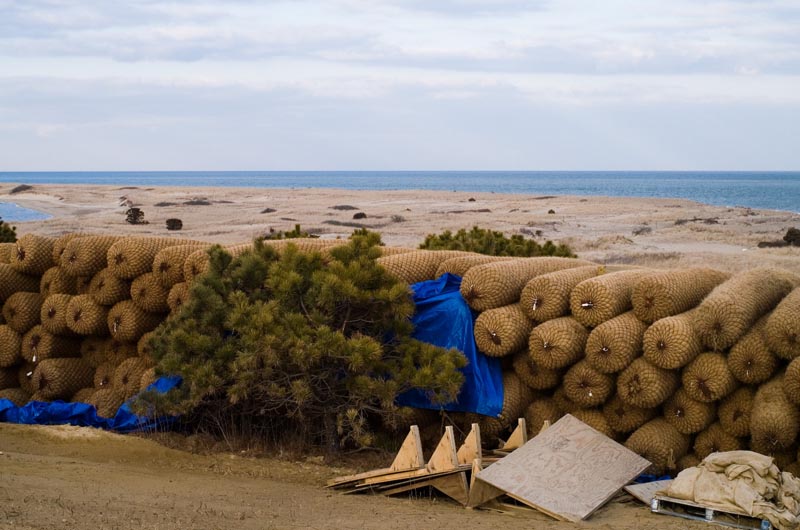Wasque Point is a remote place; this is the far southeastern corner of Chappaquiddick, an island off an island. The name comes from the Algonquin word Wannasque, which means “the ending.” Where the land ends, there is nothing but Atlantic Ocean, dotted with flocks of scoters bobbing where the waves break, and then it’s ocean as far as the eye can see.
But at this point where sea meets land, nature has staged a dramatic event over the last year: severe erosion, said to be unprecedented, has drastically altered the landscape, eating away at the bluff and bringing the ocean ever closer to Richard and Jennifer Schifter’s summer home. Looking out at the ocean from the property, the lawn stops abruptly, 50 feet past a stone swimming pool enclosure, ending in a coastal bluff lapped by waves. Plans are now underway to move four structures on the Schifter property: the 8,803-square-foot house currently valued by the town at $7.6 million, a guest house, garage and another home farther inland, in an effort to save the property from the encroaching sea.
When construction on the home was completed in 2007, it was 220 feet away from the coastal bank. Mr. Schifter, a partner with a private equity firm in Washington, D.C., and Mrs. Schifter, who has a background in social work, came to Chappaquiddick because they were looking for a gathering spot for their four daughters and future grandchildren. Mrs. Schifter stumbled on the property online, and after coming out to see it, they put an offer in that day, on their first trip to the Vineyard. The family spends large parts of the summer there now and frequently visits in the off-season and over holidays.
The Schifter property is bordered by conservation land owned by The Trustees of Reservations. Poucha Pond lies to the east.
In 2007, an April northeaster caused a breach in the barrier beach that ordinarily runs between Katama and Wasque. The long ribbon of beach that once connected Chappaquiddick to Edgartown and divided Katama Bay from the ocean was broken. And the natural forces that resulted from the breach, which over time has narrowed and migrated eastward, led to the situation surrounding the Schifter house today. First there was severe erosion in early 2012 at Wasque Reservation, owned by the Trustees. A sandy beach has since disappeared and trees are tumbling off the cliffs into the surf.
Speaking to the Gazette by telephone this week, Mr. Schifter described his close-up view of the changes he has witnessed at his property. “Although the beach was gradually eroding, the water didn’t reach the bluff until August 2011,” he said. That was one week after one of his daughters was married on the beach. Hurricane Irene hit and brought waves up to the bluff for the first time, he said, but things stabilized after that.
But then the erosion began to accelerate in April 2012, he said. By August 2012, “it started to accelerate at a rate that clearly was posing a threat to us.”
He said his family was “confronted with a realization that inaction was not an option, sort of the reality that sunk in that our house was in fact threatened.”
W. Sterling Wall, a Chilmark coastal geologist who has been working with the Schifters, told the Gazette yesterday that the west side of the bank has lost about 70 feet from August 28 through Feb. 4. The east side, which is not protected, has seen even more pronounced erosion, about 125 feet. And now plans are under way to move the houses.
While Mr. Schifter said at first the idea “struck [him] as a daunting task,” in fact there was a method. George Sourati, an engineer who owns Sourati Engineering Group, found a group that could do the job: the International Chimney Corporation based in Buffalo, N.Y. The company specializes in moving historic structures and unusual buildings, and will work with a subcontractor, Expert House Movers.
The project has been fraught with complications.
The first problem was finding a place where the house could be moved to; the Schifter property is nine acres, but more land was needed. So in December the Schifters bought neighboring property, including a house, from the Leland family for $4.5 million.
The Leland home will be moved first, making room for the rest of the project. Land behind the Schifter house will be cleared of scrub oak and pitch pine, and then everything — the main house, a guest house, a garage, a pool, a basketball court, the driveway, even the flag pole — will be either relocated or rebuilt.
In the end the house will be situated 325 feet away from the coastal bank, Mr. Sourati said.
Permits must still be obtained from the Edgartown conservation commission and the planning board; once they are approved, work will begin immediately. Richard Lohr, president of International Chimney, said a crew of about a dozen will be involved, and the company is ready to go.
The first phase of the project, expected to take about a month, involves excavation beneath the main house, which will be moved completely intact, including the basement.
Everything will be supported with a system including jacks and beams, Mr. Lohr said, and then jacked up and loaded onto about 20 small dollies, each the size of a small Volkswagen. The house will be raised up on a unified system, and a route will be prepared to the new location, where new foundations will be built. The actual move, getting from the old location to the new one on wheels, will take about a week, he said. The guest house and the garage will also be moved, though those are smaller projects, and the pool will be removed and then rebuilt at a new location. Mr. Sourati said the plan calls for careful recycling of materials whenever possible.
Work by International Chimney will take about four to four and a half months. Remarkably, the Schifters will not be required to pack up any of their household goods. “Leave the furniture in the house, leave the pictures on the walls,” Mr. Lohr said. “It’s an unusual job, but it’s pretty routine for us,” he said. “We’ve certainly done a lot messier projects.”
One major logistical challenge will involve getting the equipment to Chappaquiddick, where most goods and building materials must travel on a small three-car ferry. Mr. Lohr said International Chimney will barge equipment to the Island from Maryland; the equipment will then be unloaded with a crane at the Chappy ferry point.
After the move, it will take about six months more to relocate and re-connect systems such as septic, electric and water.
The contractor for the project is Richard Knight Jr., whose building company Knight and Zadeh built the Schifter home originally. Now Mr. Knight and his partner Michael Zadeh will have the unique experience of taking the house apart — and building it again.
“It’s astonishing, really,” Mr. Knight said during a visit to the site this week, referring to the erosion. “And part of it is how quickly it’s happened as well. When the house was built . . . there was a bluff and then there was a beach, the beach was almost a quarter of a mile, probably, of sand out in front there. So the house when we built it and when we sited it, it felt safe and comfortable, and not at all vulnerable. But hindsight being what it is . . . looking at it now you can say, ‘well, this is process, this is mother nature.’ It was not expected, obviously.”
As for the future, when the breach closes, the erosion is expected to stabilize, but no one can say for sure when that might be.
“It’s a very difficult situation,” said Mr. Sourati, who as engineer will work alongside Mr. Knight on the project.
Both men said the job is unlike any they have ever done. “We’ve moved little buildings and houses, but nothing of this scale,” Mr. Knight said.
“No one’s worked on a site like this one,” Mr. Sourati said. “It’s so dynamic.”
Meanwhile, temporary emergency measures have been taken to stem the erosion. Late last year the conservation commission approved the installation of a coir envelope system, essentially huge, long envelopes of sand placed at the foot of the eroding bank. The question of whether the envelopes will be allowed to stay is a future issue for the town to address. The Trustees have already said that while they support the project to move the Schifter buildings, they will oppose any permanent beachfront protection system.
The issue was discussed at a conservation commission meeting last week. “We’re dealing with a really tough problem,” coastal geologist Leslie Fields told the commission last week. “This is so extraordinary at this site; the erosion rates are unprecedented and the applicant, the homeowner, is going to extraordinary measures . . . I’ve been in this business a long time and you see it rarely.”
Others raised the question of to what extent people should be allowed to protect their property.
“The bottom line is, the real decision is, are we going to allow in the future that man is going to be able to protect these investments . . . or are we going to say at a certain point, when the sea taketh, the sea taketh and that is it,” Chappy resident Woody Filley said.
With the Schifter house now perched at the very edge of Wasque, the questions come into sharp relief.
“When you’re there, it’s hard not to notice what is happening,” Mr. Schifter said.
While others deal with the logistics of the move and issues of coastal erosion, for the Schifters this also has been an intensely personal experience. “At the time we purchased the property and built the house, Jenni and I had four unmarried daughters, but we felt we were investing in a project that we could leave to our grandchildren,” Mr. Schifter said. “And we now have five grandkids and [a sixth] on the way, and they’ve certainly been getting everything out of the house that we hoped they would.”
He continued: “They love going there, and I’d say the toughest thing we’ve had to deal with is the realization that we may not in fact be able to leave something to our grandkids, and so from that standpoint it is gut-wrenching and stressful. But at the same time we try to keep things in perspective. It’s not a tragedy. Life gives everyone challenges, and this happens to be the one we’re dealing with now.
“You can fret about it or you can try to figure out if there’s something you can do to respond and to either mitigate the harm or to deal with it. And so what we’ve been trying to do is figure out the steps that we can take to increase the likelihood that there’ll be something at the end of the day that we’ll continue to enjoy, and that’s what we’re trying to do.”













Comments (25)
Comments
Comment policy »